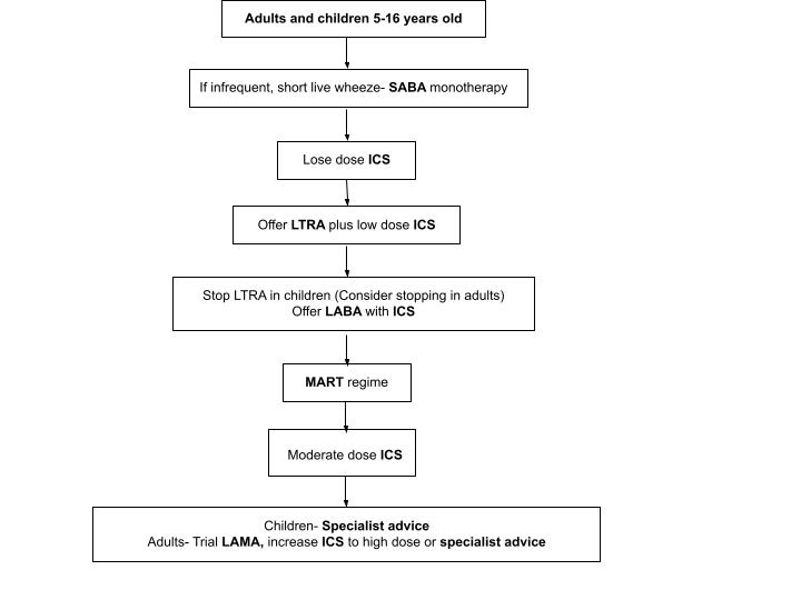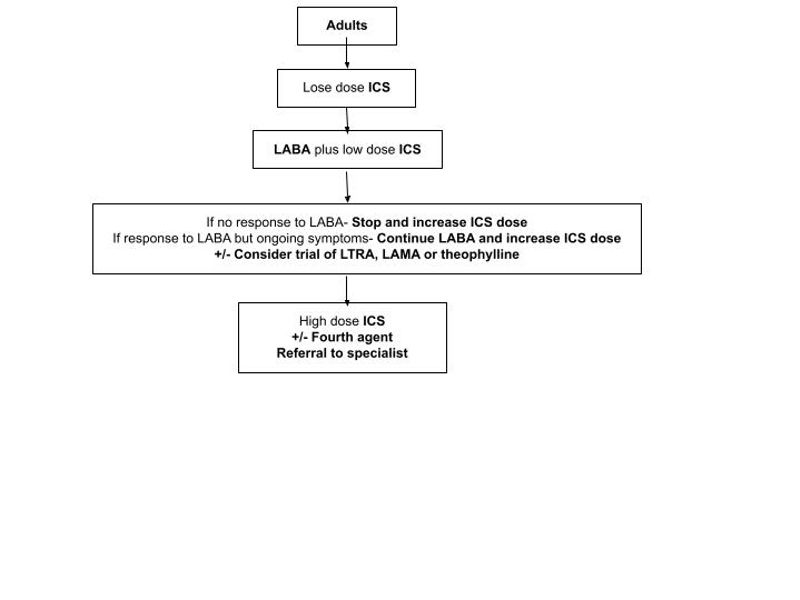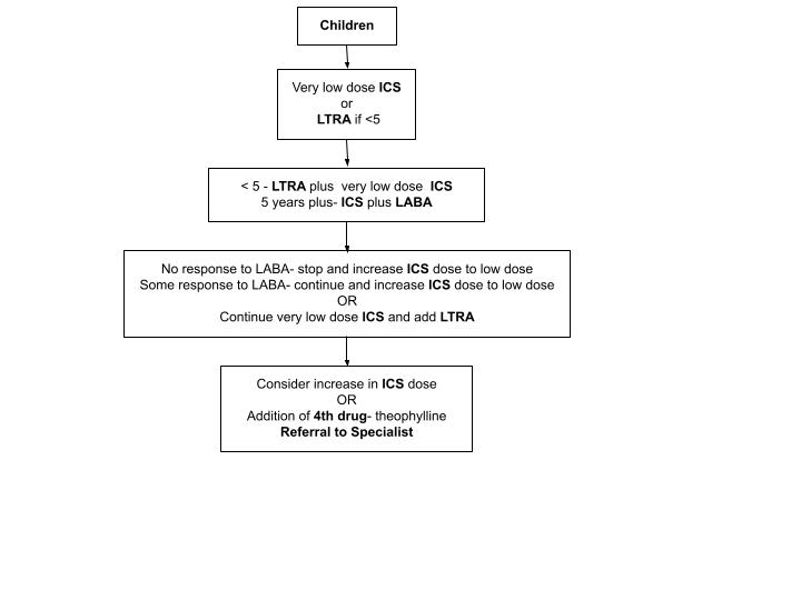Expand all
Collapse all
Overview
In the UK, over 8 million people have been diagnosed with asthma (National Institute for Health and Care Excellence (NICE), 2022a). The incidence of asthma is higher in children, but adults may present with sudden onset asthma. One of the reasons for this is occupational asthma, which is a result of substances encountered at work (NICE, 2022a). Occupational asthma tends to be associated with high-risk occupations where there is dust, or exposure to chemical substances. Symptoms tend to improve when the individual is away from the workplace (NICE, 2022a).
There is a link between asthma and poor air quality. It is estimated that air pollution in the UK contributes to up to 36 000 early deaths in the UK (Asthma and Lung UK, 2020a). Dampness and mold in housing can also cause asthma and other respiratory diseases.
In the UK an estimated 2.9 million people are not receiving basic care as recommended
To view the rest of this content please log in
Symptoms
The most common symptoms of asthma are:
- wheezing
- breathlessness
- chest tightness
The symptoms are usually:
- episodic
- diurnal (worse at night or in the early morning)
- triggered or exacerbated by exercise, a viral or bacterial infection, exposure to cold air or to allergens (NHS, 2021a; NICE, 2022a).
Symptoms can worsen in severity over a shorter time, which is often known as an ‘asthma attack’ or exacerbation of asthma. Patients having an acute asthma attack require urgent acute management, which can include hospitalisation for reversal of the airways narrowings (NHS, 2021b).
To view the rest of this content please log in
Aetiology
Asthma is a condition caused by chronic inflammation of the airways resulting in airway obstruction and hyper-reactivity (Eggert and Majumdar, 2022).
Allergic asthma (known as atopic asthma) is airway inflammation triggered by allergens. Common allergens include pollen, dust mites, pet fur or feathers. Allergic asthma tends to run in families. For some individuals, the allergen or trigger is seasonal and includes pollen and cold weather (Asthma and Lung UK, 2022).
To view the rest of this content please log in
Diagnosis
The diagnostic pathway for asthma differs depending on the age of the patient. A good clinical history and examination is vital.
Individuals may present for the first time with an exacerbation of asthma, without a previous diagnosis.
Clinical examination may demonstrate the following:
- raised respiratory rate
- audible wheeze
- hyperinflated chest
- hyper-resonant percussion
- reduced air entry
- widespread, polyphonic wheeze (Longmore et al, 2014).
Most patients present with a chronic history of episodic diurnal symptoms and may not have any findings on examination (NICE, 2022a).
A diagnosis of asthma should not be made without objective tests. Objective tests include:
- spirometry
- fractional exhaled nitric oxide (FeNO)
- peak expiratory flow (PEFR) testing (NICE, 2017).
Spirometry
Spirometry testing uses a device to measure how much air an individual can breathe out and checks for obstructive or restrictive patterns of breathing. Patients with asthma will sometimes have an obstructive pattern on their spirometry testing.
To view the rest of this content please log in
Management
There is no cure for asthma. The aim of treatment is to manage the symptoms and prevent asthma exacerbations with the fewest medications as possible (Eggert and Majumdar, 2022). There are two main guidelines for stepwise treatments in the UK from NICE (Figure 1) and BTS/SIGN (Figure 2: adults; Figure 3: children)



To view the rest of this content please log in
Key Points
- Breathlessness causes anxiety therefore reassuring the patient is very important. Parents of a child having an acute asthma attack are likely to be hyper-anxious. Reassuring them can help them to relax which in turn will be imitated by the child.
- Ensure any oxygen therapy is administered in accordance with its prescription or standing protocol. Remember oxygen therapy dries tissues so offer frequent sips of fluid.
- Take and record the patient’s vital signs including oxygen saturation level and using the results as a baseline repeat these at regular intervals. The frequency will depend on the severity of the patient’s condition, noting any improvement, or deterioration.
- If the patient’s condition appears to be rapidly deteriorating escalate this to medical staff immediately.
To view the rest of this content please log in
Resources
References
Asthma and Lung UK. Around 800,000 Brits with asthma getting poor care. 2018. https://www.asthma.org.uk/about/media/news/press-release-around-800000-brits-with-asthma-getting-poor-care/ (accessed 18 January 2023)
Asthma and Lung UK. Asthma death toll in England and Wales is the highest this decade. 2019. https://www.asthma.org.uk/about/media/news/press-release-asthma-death-toll-in-england-and-wales-is-the-highest-this-decade/ (accessed 25 January 2023)
Asthma and Lung UK. What are the effects of air pollution on your lungs?. 2020a. https://www.blf.org.uk/support-for-you/air-pollution/effects (accessed 18 January 2023)
Asthma and Lung UK. Spirometry and bronchodilator responsiveness testing. 2020b. https://www.blf.org.uk/support-for-you/breathing-tests/spirometry-and-reversibility (accessed 18 January 2023)
Asthma and Lung UK. Spacers. 2021a.
https://www.asthma.org.uk/advice/inhalers-medicines-treatments/inhalers-and-spacers/spacers/#spacerbenefits (accessed 18 January 2023)
Asthma and Lung UK. Montelukast. 2021b. https://www.asthma.org.uk/advice/inhalers-medicines-treatments/add-on-treatments/montelukast/#howdoesmontelukasthelp (accessed 18 January 2023)
Asthma and Lung UK. Biologic therapies for severe asthma. 2021c.
https://www.asthma.org.uk/advice/severe-asthma/treating-severe-asthma/biologic-therapies/ (accessed 18 January 2023)
Asthma and Lung UK. Types of asthma. 2022. https://www.asthma.org.uk/advice/understanding-asthma/types/ (accessed 18 January 2023)
British National Formulary. Treatment Summaries, Asthma, chronic. 2023. https://bnf.nice.org.uk/treatment-summaries/asthma-chronic/ (accessed 18 January 2023)
British Thoracic Society/Scottish Intercollegiate Guidelines Network . Guideline for the management of asthma. 2019.
To view the rest of this content please log in